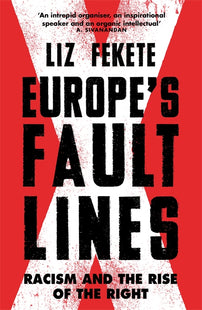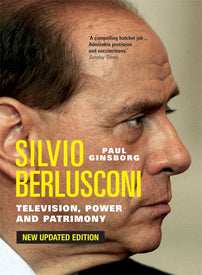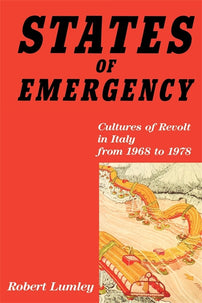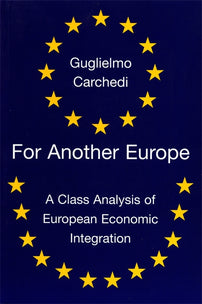The Gross Coalition
The question of coalitions will be the decisive factor in the character of the next Italian government.
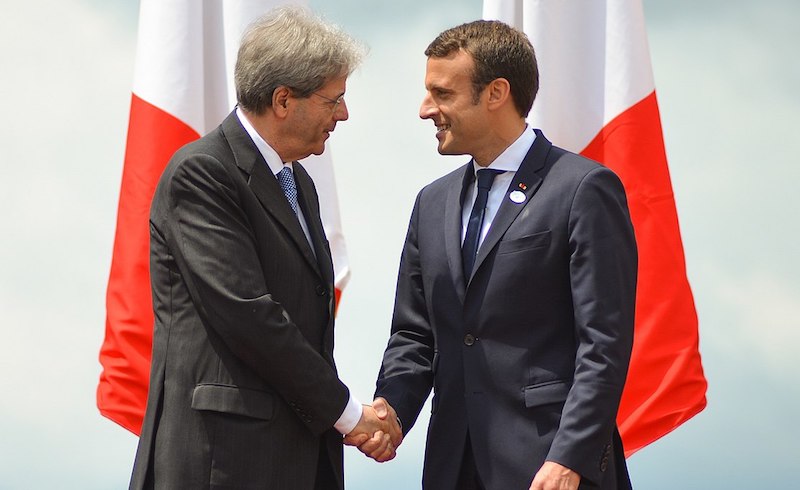
First published in Jacobin.
It’s unlikely we’ll know the real result of this Sunday’s Italian election in the hours or even days after it takes place. This partly owes to the difficulties posed by the new electoral law: given the combination of “first-past-the-post” and proportional systems, early exit polls will offer no firm conclusions. But the really decisive factor is the question of governing coalitions. Shifts in voter opinion that will be revealed in the election on March 4 are quite a different matter from the actual formation of the new administration.
One prospect looming large on the horizon is a larghe intese (grand coalition) government, or what is more pejoratively termed an inciucio (stitch-up). Judging by opinion polls, a broad coalition including both Matteo Renzi’s Democratic Party (PD) and Silvio Berlusconi’s Forza Italia looks increasingly likely. Failing this, the possibility of some sort of fudge where power is delegated to neutral or technocratic figures on a supposedly temporary basis has also been mooted. The last six years saw a series of such arrangements.
The only force that can realistically hope to break this continuity and win a majority of seats in both houses is the center-right list, which currently polls at around 36 to 37 percent (perhaps two points short of a majority). This includes Silvio Berlusconi’s Forza Italia, the hard-right Lega, the small post-fascist Fratelli d’Italia, and the centrist Noi con l’Italia. There is, however, intense competition for hegemony between these forces, and they could easily break apart once votes are counted.
From New Center-Right to New Center-Left
For a precedent we need only look back to the last election in 2013, when — faced with a fragmented result — Berlusconi broke with his pre-election allies to support a deal with the PD and other centrists. That cross-party administration lasted for only five months before Berlusconi abandoned the government, splitting even his own party. In the aftermath of this, since the end of 2013, Italy has been governed by a union of the Democratic Party and small ex-Berlusconian forces who stayed loyal to the pact.
Now cohered in a party called New Center-Right, these latter have, paradoxically, been integrated into what the media dub the “center-left” electoral front. For this alliance, currently polling at 25 percent, the only hope of returning to office after March 4 is a post-election deal with Berlusconi. Center-left grandees like 2006–15 Italian president Giorgio Napolitano and two-time premier Romano Prodi have in recent days championed Paolo Gentiloni, PD caretaker premier since December 2016, as potential leader of a renewed technical or grand-coalition government.
In the 1990s the formerly Communist layers of the PD embraced corporate liberalism in the name of resisting Berlusconi, invoking his whiff of criminality and his post-fascist allies to demand that the Left give disciplined support to his centrist opponents. Yet today the billionaire tycoon is less of an enemy to the PD, who prefer instead to direct their fire at the insurgent Five Star Movement (M5S). This chaotic movement, today the largest single force at over 25 percent in the polls, appears too fractious to form a coalition of its own. But it remains the main thorn in the side of both the center-left and center-right.
M5S draws votes from traditional bastions of the center-left — it is backed by two-fifths of blue-collar workers, and also strongly supported among the young and precarious — and also now stands in the centrist PD’s imaginary as a “populist” threat that must be resisted. It fights this crusade essentially by asserting that the M5S, unlike itself, is “irresponsible,” rather than making any attempt at salving the economic and political grievances that feed M5S’s support. Decisively, the PD has recently been joined in this cause by Berlusconi, who has assumed the mantle of defending Europe against populism, following a 2017 rapprochement with Angela Merkel.
While only 45 percent of Italians declare themselves open to a grand coalition, the figure rises to 80 percent among the PD’s remaining base. After a brief advance when Renzi entered office in 2014, the PD is now backed by only a fifth of voters; having failed to create a new broad left, it has been reduced to a mainly old and middle-class vote. Heir to a mighty Communist Party as well as fragments of Christian Democracy, the PD today polls only fourth-placed among blue-collar workers. Its base withering, it seems destined in this election to join the list of failing European center-left forces.
Notable in this context is the recent comparison some PD dissidents critical of Renzi have made with the German Social Democratic Party (SPD). The latter is today besieged by the far-right Alternativ für Deutschland (AfD) and remains in crisis after its botched coalition talks with Angela Merkel. There are distinct dynamics in each country: the Italian party system is far more unstable, the social crisis deeper, and the chaotic M5S is not simply comparable to the far right. Yet the crisis of the German center-left has galvanized those in the Italian PD wary of diluting the party’s identity even further.
A Distant Model
Obsessed with making Italy a “normal country,” the Italian center-left has devoted unusual attention to foreign models. The Communist Party repudiated Soviet socialism in the 1970s, and after 1989 most of its former cadres began to look across the Atlantic for a new identity. In 2007 they created a Democratic Party, together with small centrist forces, and in the 2008 election adopted the Obamean slogan “Yes We Can” (in English). PD leader since 2013, former Christian Democrat Matteo Renzi has also highlighted former British prime minister Tony Blair and French president Emmanuel Macron as examples which he seeks to reproduce in Italy.
At the heart of efforts to remodel the Italian center-left on the lines of the US Democrats was a series of attempts to create a majoritarian electoral system. Replacing proportional voting systems with ones that rewarded the largest coalition with an automatic majority of seats would ensure alternanza (a clear exchange of power between left- and right-wing blocs) and deny oxygen to third parties, much as it has in the United States. The crusade against Berlusconi was the means by which the PD’s architects sought to remodel the political terrain on a binary basis, rallying the Left behind their own leadership.
Shifting to the neoliberal center, they believed that they could use Berlusconi as a foil while also winning over part of his center-right base. Yet they had overestimated their success in entrenching a US-style binary on the basis of party identities that emerged only in the 1990s. The pervasive corruption of Italian public life, together with economic stagnation and the weakening of other forms of social representation, was in fact already eroding its social roots. The PD itself offered neither a galvanizing vision of the future nor even an extension of patronage networks that could integrate younger Italians.
With the loss of the grand collective projects of the twentieth century, Italian politics imported the worst and most superficial aspects of US public life. In a sense the PD was the only party left standing, as its center-right rival became a media machine without local sezioni (branch offices) in the traditional Italian style. Yet the leaders of the center-left (cheered on by the international business press) vastly overestimated the extent to which “values” issues and anti-Berlusconism had formed a new political binary standing above economics. At the same time, a complacent belief in the longevity of boom-era Blairism led the party to take its working-class supporters for granted.
The center-left’s surprisingly narrow victory in the 2006 election offered a first, unheeded warning sign. But the real turning point came with the 2008 financial crisis, as comedian Beppe Grillo’s Five Star Movement became a cipher for social discontent. Having first arisen as a networked movement in 2007, the M5S and its promise of an online democracy could pose as an alternative to a closed and corrupt partitocrazia. The self-immolation of the radical-left Rifondazione Comunista (Communist Refoundation Party), supporting former Christian Democrat Romano Prodi’s government from 2006 to 2008, gave the M5S a free run in claiming an anti-establishment mantle.
As Italy plunged deeper into economic crisis, from 2011 to 2013 the PD and Berlusconi’s party supported Mario Monti’s cabinet of unelected technocrats, which implemented the cuts in public spending demanded by the European Central Bank, and moreover freed the main parties of having to implement these measures themselves. However, such a transparent arrangement also fed the M5S’s claims that center-left and center-right were really just the same; the austerity policy also deepened the poverty and unemployment fueling a wider sense of social despair. The M5S’s characterization of the main parties was further emboldened by the February 2013 general election.
In one sense, the majoritarian electoral system did act as its architects had intended in the 2013 contest, preventing this third party from contending for high office. The M5S secured only one-sixth of the seats in the Chamber of Deputies, despite winning over 25 percent of the vote, whereas the PD and its allies won 54 percent of seats on 29 percent of the vote. However, this failed in the Senate, elected on a different system, where the M5S’s similar result was enough to stop the center-left from forming a majority. Despite some initial attempts to draw the M5S onto its side, the PD ultimately opted for the only possible solution: to form a government reliant on Berlusconi.
From Blair to Macron
This subversion of the binary order did not last for long. The grand coalition finally sealed two months after the election was unable to protect Berlusconi from his final sentencing for tax fraud, and without incentive to back the government the media magnate pulled out his ministers. This left only fragments of the center-right within the new administration. The ructions in the PD were less dramatic, though its pre-election leader Pierluigi Bersani was replaced by first Enrico Letta and then Matteo Renzi, who installed himself as premier in February 2014.
From here he drove a dramatic personalization of the party, considering himself its chief electoral asset. The collapse of Forza Italia over the course of 2014, after Berlusconi had been banned from public office, gave a brief boost to the PD’s popularity, coinciding with Renzi’s new leadership. The party’s 40 percent vote in that May’s European election (even if on a low turnout) was widely perceived as a mandate for Renzi’s move to occupy the political center.
However, even when Berlusconi was at his weakest, Renzi rehabilitated his apparent rival. His first months in office were shaped by the “Nazareno Pact,” in which the two men expressed their common concern to reinforce the majoritarian aspect of the electoral system. In parliament, opposition Forza Italia members of parliament were decisive in passing a measure opposed by part of the PD. If the new system was ultimately declared unconstitutional, other measures they had agreed upon were subject to a national referendum in December 2016, in which they again took opposite sides.
Designed to allow the easier formation of a governing majority and remove checks on executive power, this reform was widely understood as a centralizing power-grab. Renzi’s excessive confidence in his own popularity — vowing to quit public life if he lost — made the referendum the focus of a broad range of social discontent, and a chance to kick the establishment. This also took a distinct form on the Left, given the old Communist Party’s attachment to the 1947 constitution born of the anti-Nazi resistance. A 60 percent “no” vote in the referendum sealed Renzi’s fate; even after he resigned, a section of the PD split.
Those who rejoiced in Renzi’s downfall did not expect him to leave the stage for long, and he soon resurfaced in a slightly altered form. On May 7, 2017, the same day that Emmanuel Macron was elected president of France, Renzi returned as secretary of the Democratic Party. He invoked the French example in a new bid to resist “populism” while also capturing center-right votes. In practice, both recent electoral results and current polling would suggest that Renzi is more like one of the discredited figures who Macron emerged to replace than the great new hope himself.
Renzi’s invocation of the French model was in fact typical of his superficiality. Having long sought to move the Democrats to the right in the manner of New Labour, he has in recent months borrowed the tactics with which Macron operated in 2017, in particular by chiding the Left for failing to support him against “populism.” The results of such an approach were questionable as a means of fighting the far-right figure Marine Le Pen in France’s election (where there was massive abstention) and make even less sense in Italy, where the M5S inspire no fear similar to the Le Pen’s Front National across the rest of the political spectrum.
Macron used the crisis of France’s Socialist Party, in government over the previous five years, to form a new centrist political force that also exploited the weakness of the center-right. This was enough to scrabble together 24 percent in the first round, and thus secure an easy run-off against Le Pen. Ten months later, the political landscape remains in flux, but Macron has for now stabilized a novel centrist force around himself. It is hard to imagine why Renzi thinks that he is likely to achieve this with the PD in Italy, when he in fact appears increasingly dependent on Berlusconi.
Renzi’s PD confrères were themselves slow to realize that his personal appeal would never be able to make up the ground that the party had lost to the M5S. First to split were figures like Pierluigi Bersani and Massimo D’Alema, ex-Communists long hostile to Renzi who nonetheless supported his key measures. They broke from the PD after the 2016 referendum in belated recognition that the embrace of corporate liberalism had gone too far. They have formed a new party, and in the general election are standing as part of the Free and Equal list (currently around 5 to 6 percent in the polls).
Free and Equal (led by ex-PD Senate leader Pietro Grasso) seeks not so much to break from the PD’s ideological assumptions as to pull that party into a renewed center-left coalition shorn of Renzi’s leadership. Tellingly, it continued to support Gentiloni’s government until the end of the parliament. In this sense, Bersani’s aim is the restoration of something like l’Ulivo, the less centralized, soft-left coalition that preceded the formation of the PD. While this push could hardly be said to have much echo within the PD, some party realists do appear to recognize the need for some kind of change, of course.
The Große Koalition
In the run-up to the March 4 national vote, the center-left coalition led by the PD presents itself as a candidate for government, and Renzi has repeatedly denied that he would enter any grand coalition agreement with Berlusconi. In fact, while the billionaire tycoon is barred from public office, and thus cannot become premier in the current electoral cycle, there is also no prospect of Renzi himself taking charge of such an alliance. More likely leaders include current premier Gentiloni or finance minister Pier Carlo Padoan, each seen as more neutral caretaker figures from the PD.
At the same time, within the election campaign itself, coalition allies and media surrogates introduce the basic realities of the situation into public debate. This seems likely to ease the formation of such a pact after March 4. Health minister Beatrice Lorenzin and the libertarian pro-European Emma Bonino, both non-PD figures running in the center-left coalition, have each admitted the probability of a grand coalition, as have Padoan and PD grandees like Giorgio Napolitano. Berlusconi’s centrist ally Raffaele Fitto plays a similar role in the coalition of the Right.
Instruments like president’s, national unity, or technical governments have been deployed repeatedly in Italy in recent decades, using broad coalitions to push through controversial measures. Currently party leaders, concerned to maintain the unity of their own parties, are talking about holding a second election in the case of an unclear result, rather than resort to forming a grand coalition. Insofar as Berlusconi has referred to the prospect of backing a renewed Gentolini government, he proposed this only as a stopgap before a fresh vote later in 2018.
Such arrangements are, however, becoming something of a norm, and not only in Italy. What might have in the 1990s appeared as a peculiarly Italian form of government — the stop-gap, designed to overcome immediate crises — has in fact generalized across Europe in the post-crisis period. This is particularly notable in Spain, where after two elections in rapid succession the Socialists today prop up the right-wing Partido Popular government, and in a sense in France, where Macron coalesced much of the center-left and center-right in a campaign to “block Le Pen.”
Most notable, however, is that this upheaval is also playing out today in Germany, apparently the bulwark of European stability. While Germany does have a history of grand coalitions, the notable change in the current period is that such a solution is simultaneously becoming both increasingly necessary and increasingly unpopular. The combined vote total for the Christian Democrats and Social Democrats has fallen from 77 percent to 53 percent since 2002, and as its base weakens the SPD today faces intense internal opposition to sealing a fresh Große Koalition.
The feeble result for the SPD in September, at just 20 percent of the vote, combined with its historically leading role in European social democracy, appears to have alerted some of Renzi’s challengers within the PD, who seek at least a greater rhetorical shift to the left. Notable in this sense is justice minister Andrea Orlando, Renzi’s main opponent in the 2017 PD primaries, who has used the German example to denounce a national unity government as a path to self-destruction.
It seems that on March 4 the PD will secure just as weak a vote as its German counterpart did in last year’s Bundestag vote. The tendency in the Renzi years to repudiate the PD’s historic base and even identity is combined with a weakening of its hegemony over the rest of the Left. Even Susana Camusso, leader of the CGIL, the country’s largest trade union federation, has switched support to Free and Equal.
Renewing the Left?
In presentational terms, Free and Equal’s leader Pietro Grasso has gone where the PD has not, in attempting to capture some of the stardust around Jeremy Corbyn. He has adopted the Labour Party’s election slogan “For the Many, Not the Few,” and met with the Labour leader in London on February 20, if only for a photo-op. This meeting seemingly owed to the parties’ alliance in the European Parliament, and Corbyn appears not to have made any public comment endorsing Grasso.
They, like Renzi’s party, are part of the “Socialists and Democrats” European alliance; its name refers to “Democrats” in deference to the PD’s rejection of any “socialist” label. However, Renzi today appears keen to mount a further break with social democracy and draw his party into a new centrist alliance together with Macron’s En Marche! vehicle and Spain’s Ciudadanos. But if this represents a further evacuation of the center-left in Italy, the more positive dynamics that have emerged to the left of social democracy in other countries have as yet barely touched the peninsula.
It seems that Europe-wide organization — something very different from just following foreign examples, or veneration of “Europe” — may offer some sort of exit route. Even in the run-up to March 4, such discussion is particularly focused on the 2019 EU parliament election. While the Italian radical left is far from an inspiration for the rest of the continent, as in the days of the old Communist Party and even Rifondazione, there is at least enough of a stir to draw outside interest.
Most telling in this regard was Jean-Luc Mélenchon’s recent visit to Naples. His France Insoumise movement is now the second most popular party in France; in last spring’s election it dramatically accelerated the destruction of the Socialist Party, and also established a certain hegemony over other radical left forces. Seeking allies abroad, on February 15 Mélenchon visited the ex-OPG social center in Naples (wellspring of the Potere al Popolo list) and also met with the city’s mayor, Luigi de Magistris.
Emphasizing the need for a new radical project at the continental scale, in Naples Mélenchon advocated a new alliance including these forces, his own movement, and Podemos. This project is complicated by a rival bid launched by former Greek finance minister Yanis Varoufakis. Calling for a coalition of “realistic disobedience,” he hopes to recruit De Magistris as the Italian wing of his own project, Democracy in Europe Movement 2025. The clashes between (and within) these lists over European Union reform, and the position De Magistris takes, will likely decide the shape of any Italian left intervention in the 2019 European election.
If forces to the left of social democracy are emerging only in fits and starts in Italy, March 4 will be decisive in determining the center-left’s own short-term future. The first results from the Italian national vote, this Sunday evening, should also be accompanied by the outcome of the SPD members’ referendum on joining the Große Koalition. In each country social democracy is waning to the advantage of the far right; in each case, recent events have failed to produce any fundamental overhaul. Even the identity of the Left rapidly weakens, as once-great parties cling to the center for cover.
David Broder is a historian of French and Italian communism. He is currently writing a book on the crisis of Italian democracy in the post-Cold War period.
[book-strip index="1" style="display"]
